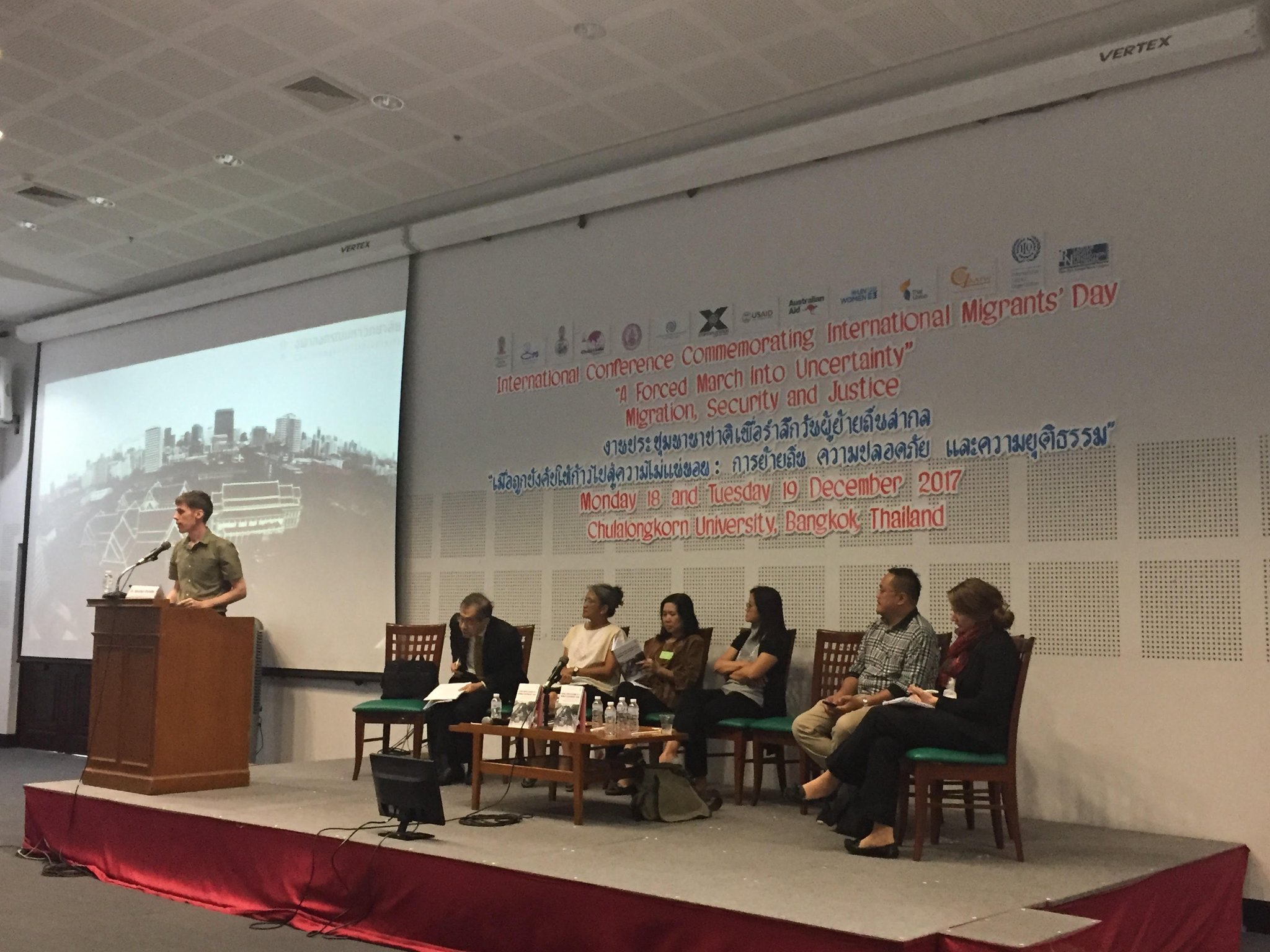Human mobility and resettlement, voluntary or forced, is one of the most severe consequences of environmental disasters. Floods, storms and earthquakes are increasingly impacting people’s decisions to flee their homes and to seek safety and secure livelihoods elsewhere within their own countries or across international borders. In 2016, an estimated 24.2 million people were displaced by disasters making displacement one of the biggest humanitarian challenges of the 21st century. Southeast Asia is one of the most affected regions with 7.14 million people forced to flee in the context of sudden-onset disasters in 2013 alone. In many of those countries national response has been limited making further instances of internal mobility and/or cross-border displacement likely to increase in the near future (The Nansen Initiative, 2014).
The newly published book, “Living with Floods in a Mobile Southeast Asia: A Political Ecology of Vulnerability, Migration and Environmental Change”, sets out to sensitize national and regional policy-agendas and responses to environmental disaster and climate change-related hazards – flood hazards in particular – to the complexities of human mobility in Southeast Asian contexts. Co-edited by Carl Middleton, Rebecca Elmhirst, and Supang Chantavanich the volume uses empirical urban and rural case studies from eight different countries – Cambodia, Myanmar, Laos, Thailand, Philippines, Vietnam, Indonesia and Malaysia – to offer a nuanced and plural account of the causes and the multiple and intersecting environmental, social and political factors shaping everyday experiences of “living with floods” and mobility in the region.
The book-launch organized by the Asia Research Centre on Migration at Chulalongkorn University (Bangkok) in conjunction with the International Migrants Day 2017, allowed for a reflection on the blind spots in national and regional policy response and on some of the policy recommendations highlighted in the different chapters of the collection. In this regard, the Introduction opens-up by questioning media coverage and public discourses that generate apocalyptic narratives of human mobility in the context of environmental and climate change. With a focus on Southeast Asia, the authors remind us of how “images relayed via the world’s media of the devastating impact of various types of catastrophic floods – for example, Cyclone Nargis in the Ayeyarwady Division of Myanmar in May 2008, countrywide flooding in Thailand including of Bangkok in late 2011 and Typhoon Haiyan in the Philippines in November 2013 – have served to cement the link between catastrophic floods, mass displacement and unplanned distress migration in the public imagination”.
Such imaginaries, while effective in communicating the urgency of the issue and triggering some immediate humanitarian response, offer a one-dimensional, simplistic, and de-politicized understanding of causes and impacts of processes of environmental change and frame migration and displacement in largely negative terms. Policy interventions shaped by the same approach also do not capture the complexities of the phenomena they try to address, have a limited, short-term, effect and mostly fail to attend to issues of inequality, social equity and poverty which are part and parcel of the diversity of flood-migration-vulnerability assemblages in Southeast Asia. As the case of poor urban migrants settled in the flood-plains of Malabon City shows, those policies are also limited to the domains of disaster management and climate change concerns (deliberately) ignoring linkages with existing structural processes at work in urban settings generating further vulnerabilities (i.e. urban (un)employment; precarious housing; rights to land etc.) and limiting settlers’ ability to react.
“On one hand””, Bernadette P. Resurrección argues reflecting on the Philippines case “government’ disaster response programmes generate resettlement programmes without sufficient livelihoods opportunities. On the other, existing programmes, such as the Conditional Cash Transfer (CCTs) and Sustainable Livelihood Programme (SLP), have not benefitted any of the settlers interviewed in the Malabon City largely due to limited budget and the selectivity of the scoping of such programmes. These programmes, Disaster risk reduction (DRR) on one hand and livelihoods on the other, remain separated and actually heavily siloed”.
Disaster responses and policy agendas centering mainly, if not only, on relocation to physically safer places without considering patterns of mobility, livelihood strategies and security, and access to natural and social resources cannot be successful in reducing vulnerabilities and are likely to fail in the long term. Similarly, migration processes and strategies are largely excluded in the regional water governance. Case studies in Laos have revealed the impacts that hydropower developments can have on communities along rivers and how these can be related to emerging strategies of migration. “Yet migration strategies are not addressed or linked to natural resource governance in the region. Linking national resource management with migration strategies is very important” says Carl Middleton.
Findings in the different chapters of the book also show how livelihood strategy in rural contexts experiencing flooding is also defined by local conditions, histories and living experiences of mobility which are shaped by geography, ethnic belonging, and access to social and economic resources. Case studies in both Cambodia and Laos show how flooding is not directly causing migration. Migration rather is a response to diverse types of events such as increased mechanized work in farming; reduction of fish stock; increasing debt due to livelihood shocks etc.
To this end Albert Salamanca powerfully advocates for the need to “look across history and spaces to understand vulnerability”. To give an example, in Laos, “government policies of resettlement and sedentarization of the 1980s and 1990s, which have forced mostly indigenous ethnic minorities from remote highlands to lowland areas should for instance be considered. Yet a great challenge lies in articulating and translating those historical sources of vulnerability in actionable policy recommendation”.
The adaptive capacities of local population, reflected in their life histories of mobility and settlement, as Narumon Arunotai stresses, are also often missing from the equation in policy and programming in both urban and rural contexts. The Cambodian and Thai cases point towards rural as well as urban communities’ adaptive capacities to natural hazards and the need to further potentiate those local abilities to adapt. Farmers have been relatively resilient to flooding because flooding is generally beneficial, and because kin-based local structure often provide efficient safety nets. However, the changes in flood regime has created more regular shocks to farmers and the decrease in fish stocks has also created more vulnerability for fishers. In the poor urban settings, links with civil society and a history of self-organisation for some of the communities, as well as connections with rural contexts and therefore the possibility to enact multilocal-livelihoods provided resilience strategies in the aftermath of flooding counteracting the local government’s operate more concerned with protecting core urban and industrial zones and leaving rural and poor peri-urban areas flooded.
Hence a common message that runs across chapters of the edited volume and that was voiced by those contributing to the book launch is, as Sarah Koeltzow from the Platform for Disaster Displacement has put it, that “the famous natural disasters aren’t actually natural only!”. As such, for a better understanding we need a more nuanced and complex focus on the multiple, intersecting drivers and dynamics of environmental change and migration to show how biophysical processes cannot be disconnected from social processes (i.e. livelihoods, politics and history) when analyzing causes, risk and vulnerability in the context of migration and environmental change.
Bernadette P. Resurrección explains this further by stressing how “within the area of DRR and Climate Change Adaptation Programmes the blind spots are the other sources of vulnerability. By being largely limited to transferring people experiencing risk to more physically safe areas, those programmes miss out on processes that create vulnerability, and therefore on livelihood opportunities for people whom they resettled. So, the response is not as holistic as it should be”.
The “mobile political ecology” conceptual framework proposed in the introduction and articulated in the different chapters through the various detailed case studies has been successful in precisely disturbing the linear framing which underpins most approaches to DRR policy and planning. Applying both political economy and spatial analysis the book shows how exposure to biophysical elements generates vulnerabilities which are further exacerbated by a history of socially and politically constructed marginalization often underpinning processes of rural-to-urban migration and peri-urban settlement.
Such an approach which interrogates ways in which societal factors, governance, institutions interplay and shape individual and contextual decisions and actions and carefully considers both causes and motivations of different actors is needed to achieve that coherence and bridge the silos of research in the academic world and intervention of policy makers and practitioners and to ultimately work towards an equitable and inclusive development in the region.





